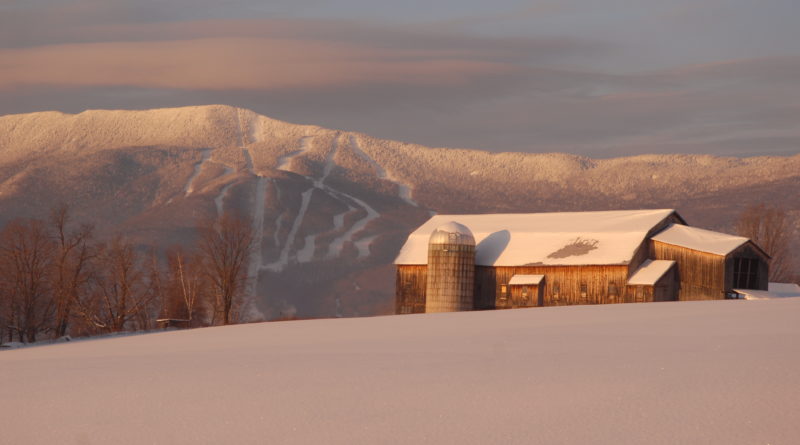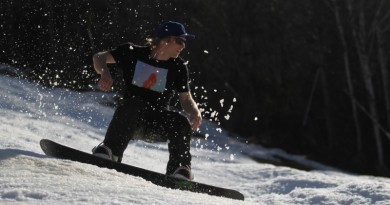Alterra Moves Into the Valley
What does Sugarbush’s sale to Alterra Mountain Company mean for skiers and riders and for Vermont’s remaining indie ski areas?
When Alterra Mountain Company announced it intended to buy Sugarbush Resort on Nov. 13, the internet lit up with mixed reactions. “Vermont ski areas are being eaten up by big corporate. Losing the Vermont charm,” wrote one person onVT Ski + Ride’s Facebook page. “It’s going to be the American Skiing Company all over,” wrote another. Others were more positive: “Mixed emotions about this. Kind of gutted and kind of feel like it’ll be all good,” Kyle Watson wrote.
Sugarbush has been one of 11 independently-owned and operated ski resorts in the state—one that prides itself on cultivating its community and having a hands-on owner who is on the mountain nearly every day.
Win Smith, who spent 28 years at Merrill Lynch (the investment firm his father helped to found), bought Sugarbush in 2001 from the floundering American Skiing Company. At the height of its expansion, ASC owned nine resorts across the country before it ran into financial difficulties.
After purchasing Sugarbush, Smith and his team successfully raised more than $20 million via the EB-5 foreign investment program. The funding went toward constructing the new Lincoln Peak Village, among other things. Terms of the Alterra sale have not been disclosed.
According to Smith, this fall the stars aligned for the Sugarbush sale after the Mad River Valley resort celebrated a record season and its 60th anniversary. Sugarbush saw about 400,000 skier and rider visits last season—a 10 percent increase over the season prior, he noted.
However, as Smith outlined in a Nov. 13 letter to Sugarbush skiers and riders, the escalating cost of doing business (now and in the future) convinced him it was time to bring in a new owner to ensure the resort’s longevity.
“The recent acquisition of 16 Peak Resorts by Vail was the tipping point in my decision to sell,” wrote Smith, of the Peak acquisition, which was completed this fall. Vail Resorts now owns Stowe, Okemo and Mount Snow in Vermont, and owns or operates a total of 37 ski areas. Alterra, which is privately-held, owns 14 resorts across North America, including Stratton Mountain Resort.
Smith also noted that he will stay on as Sugarbush’s president for the near future. “If you look at business for a long time, you learn that there are two things you want to have if you’re going to sell,” says Smith. “First, you want to do it when you don’t have to sell and you’re doing well. Second, you want to identify the right buyer. The fact that they were not going to change up the team here and that I get to stay on and manage the resort, at least through the transition, meant a lot.”
Smith doesn’t foresee any changes this coming season. “We have the same products, the same plans, the same budgets, the same brand, the same website,” he says. “All of our passes will remain exactly as they were sold for this year.” Sugarbush has been part of both Alterra’s Ikon Pass (allowing Ikon passholders to ski seven days at the resort) and the Mountain Collective pass.
In fact, Alterra has done little to change up the teams at Stratton, and in the past few years the company has invested upwards of $6 million in new lifts, a mountain bike park and other improvements.
Smith does expect Alterra to bring the sort of resources that fuel innovation. “I think we’ll see a benefit when it comes to purchasing power,” he said. “For example, next year when we buy a new groomer, I think we’ll have a more competitive discussion than if we were doing it all by ourselves,” said Smith.
With the sale of Sugarbush, there are fewer and fewer ski areas in the Northeast that draw the sort of substantive skier visits that attract large companies. “We were one of the last three independents, I think, in the Northeast that had more than 250,000 skier visits a year,” said Smith.
Representatives of Alterra Mountain Company have also toured Jay Peak. When asked whether Alterra is interested in Jay Peak, CEO Rusty Gregory said, “We are very quiet about what we are looking at, but I can tell you that we are very focused on the East. Proximity to large population centers is a big part of how we look at partnership and acquisition potential. Looking through that lens, we see a lot of opportunity in the East.” Stratton and Quebec’s Mont Tremblant and Ottawa’s Blue Mountain were the first mountains Alterra purchased in the Northeast.
However, Gregory sees a renewed opportunity for Vermont’s 10 remaining independent ski areas. “I really do believe that the bigger Alterra and Vail get, the bigger the gaps in the market are for well-positioned and strategic independents,” said Gregory.
Ski Vermont’s Molly Mahar is also optimistic about the independents, which she says demonstrate a “nimbleness” that comes less naturally to a giant like Alterra or Vail Resorts. “Thanks to the affordability of season pass offerings, we are seeing more people buy multiple season passes, especially in the Burlington area. But we’re still seeing people make day trips to places like Smugglers’ Notch or Bolton Valley. I think the rising tide really does appear to float all boats.”
Featured Photo Caption: Bragg Farm, one of the Valley’s many working farms, with the trails of Sugarbush Resort in the backdrop. Photo by Sandy Macy/Sugarbush



Pingback: Read the Holidays Issue! – VT SKI + RIDE